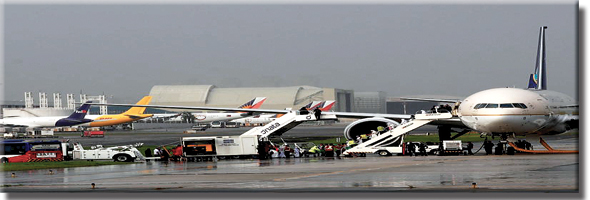Delayed? Blame the airport
By: Myla Iglesias
 Budget carrier AirAsia Philippines has the lowest on-time-performance (OTP) in domestic operations over the weekend but blames the way the airports are being run as the reason for the delays.
Budget carrier AirAsia Philippines has the lowest on-time-performance (OTP) in domestic operations over the weekend but blames the way the airports are being run as the reason for the delays.
OTP is a matrix used to measure the operational efficiency or punctuality of an airline, on time of departure and arrival. It simply means the flight departs and arrives on schedule.
Data from the Department of Transportation showed as of May 18, 2019, AirAsia had the lowest OTP in four major hubs in the country: Ninoy Aquino International Airport (NAIA), Mactan Cebu International Airport, Davao International Airport and Bohol-Panglao International Airport with OTP of 58 percent, 48 percent, 20 percent and 37.5 percent, respectively.
Despite the lowest OTP, AirAsia with 145 daily domestic and international flights will continue its operation and has no plans to cancel flights.
Dexter Comendador, AirAsia Philippines president, said this is because the airline has 25 minutes turnaround time, one of the fastest in the world.
Turnaround time is the time required to unload an airplane after its arrival and to prepare it for departure again.
Comendador said AirAsia’s aircraft close doors at their scheduled time of departure but they still have to wait for more than one hour to fly.
“(Government) can see our data, it’s their system that is delaying us. MIAA (Manila International Airport Authority) is the center of everything going in and out of NAIA. If there’s a delayed flight out of NAIA, all the flights will be delayed,” Comendador said.
Comendador also blamed “some unprofessional pilots” of “clogging the queue” at the air traffic control, delaying the departure.
“Our pilots follow the CAAP’s (Civil Aviation Authority of the Philippines) policy to call air traffic control five minutes before the STD (scheduled time of departure) for clearance… but still we have to wait… because some unprofessional pilots have called in earlier. I am surprised why air traffic control allows pilots to ask for clearance when they are not even ready to close their doors. It clogs the system,” Comendador said.
He said AirAsia’s aircraft do not have to wait because their slots at NAIA and other airports have already been planned and approved.
The data showed Cebu Pacific got the second lowest OTP in five major hubs: 2 percent at NAIA, 60 percent in Mactan, 60 percent in Clark, 40 percent in Bohol and 38 percent in Davao airports.
For international operations in NAIA, Xiamen Air got 33 percent while in Cebu, eight foreign airlines hit 50 percent OTP: Air Busan, China Eastern, Eva Air, Jeju Air, Jin Air, Silk Air, Tiger Air and T’way.
As of May 18, 2019, domestic airlines leading in OTP are AirSwift and Skyjet at NAIA; AirSwift, Cebgo and Philippines Airlines in Cebu; AirSwift and AirAsia in Clark; Philippine Airlines and Cebgo in Bohol; and PAL Express and Cebgo in Davao.
Source: Malaya.com.PH

